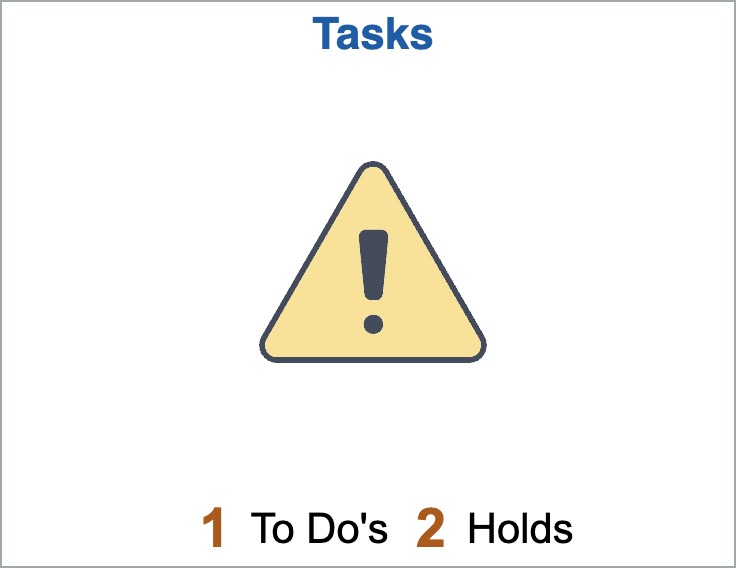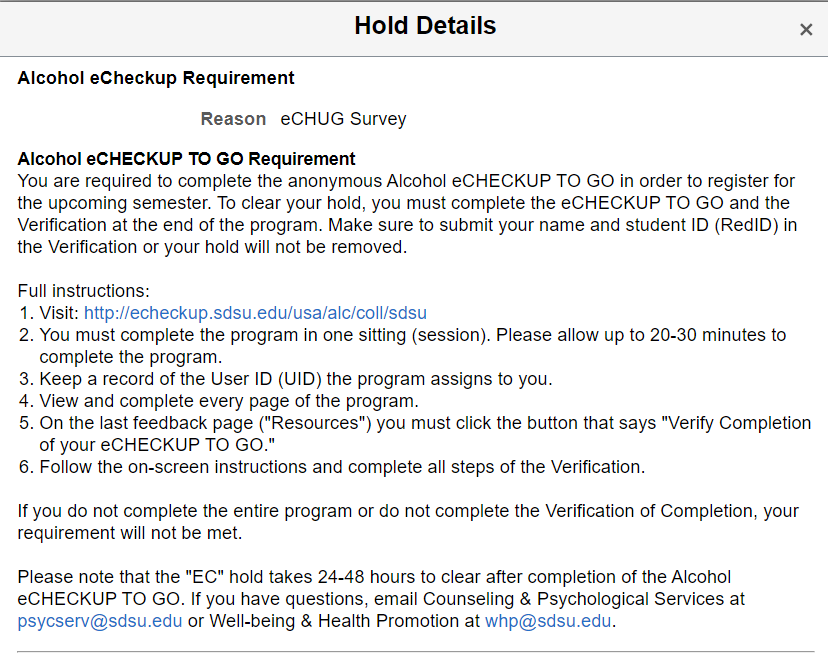Registration
- Registration Information
- Class Schedule
- Class Permissions
- Contingent Enrollment
- Course Numbering
- Course Registration Restrictions
- Course Repeat & Course Forgiveness
- Cross Campus Enrollment
- Cross Enrollment Program
- CSU Fully Online
- How to Pay Fees
- Major & Credential Codes
- my.SDSU Registration Guide
- Summer Session
- Waitlist
Registration
Each semester, students will be assigned a registration appointment to sign up for the upcoming semester’s courses. Registration windows can be viewed in my.SDSU. Students: learn how to view your registration window.
Continuing undergraduate students generally register for classes during April for the fall semester and November for the spring semester.
New first-year and transfer undergraduate students register for classes during New Student Orientation registration, typically in early July through August for the fall semester and in January for the spring semester.
Review the Degree Evaluation
The Degree Evaluation outlines degree requirements needed to graduate and is personalized to each student. Review the degree evaluation online at my.SDSU.
MyMap
The MyMAP (Major Academic Plan) is the recommended sequence of courses for each major that must be completed to graduate from SDSU and serves as a general guide used in conjunction with the degree evaluation.
Meet with an Academic Advisor
It is recommended that students meet with their Academic Advisor each semester prior to registration to review planned classes and degree progress. Appointments can be made in SDSU Navigate under Your Success Team.
Check for Holds and To-Do’s
In my.SDSU, holds will be listed under the Tasks tile.

Select the tile to review the To Do's and Holds that may need to be resolved.

Select the Hold to open the Hold Details.
In order to enroll in classes, holds will need to be resolved.

Plan and Manage Classes
Students may begin planning their class schedule by adding classes to the shopping cart once registration appointments have been issued.
No changes to the student's class schedule are permitted after the schedule adjustment deadline, 11:59 p.m. on the tenth day of classes.
Students are responsible for:
- Checking their schedule in my.SDSU.
- Making any necessary adjustments to their schedule.
- Reviewing their degree evaluation ensure the registered courses are meeting degree requirements.

Registration Occurs in Two Enrollment Periods
- General Enrollment Period: The start of registration through the fifth day of classes.
- Enrollment by Permission Number Only: Between the sixth and tenth day of classes.
Note: The fifth-day and sixth through tenth-day rule applies to fall and spring semesters only. The timelines are different for the summer sessions. Review the Academic Calendars for specific registration date information.
General Enrollment Period
- Students can add open course sections to their schedule anytime from their registration appointment date through 11:59 p.m. on the fifth day of classes.
- If a course has no open seats, students can join the waitlist. When a space becomes available, students on the waitlist will be automatically enrolled in the class based on their position on the waitlist.
Enrollment by Permission Number Only
- Beginning on the sixth day of classes students must obtain a class permission number from the instructor or department to enroll in a class. Review the Class Permissions web page for details on how to enroll with a permission number.
- Enrollment by permission number only closes at the Schedule Adjustment Deadline on 11:59 p.m. on the tenth day of classes, after which no further schedule changes are allowed for the semester.
Administration Drops
Beginning the first day of classes and through the eighth day of class at 11:59 p.m., students may be dropped by faculty for:
- Non-attendance.
- Lack of required prerequisites.
Students will be notified by email of the course drop. It is each student’s responsibility to check that their schedule is correct by the schedule adjustment deadline.
After 11:59 p.m. on the tenth day of classes, students are no longer permitted to make any changes to their class schedule for the semester. The tenth-day rule applies to fall and spring semesters only. The timelines are different for the summer sessions. Review the Academic Calendars for specific registration date information.
Late Schedule Adjustments
Late schedule adjustments are only permitted by petition only for extremely serious, fully-documented circumstances which are out of the student's control. Petitions for Late Schedule Adjustment are accepted through the last instructional day of the semester.
It is important to learn and understand the vocabulary used during the registration process. Review the following information prior to planning and registering for courses.
Semester
The academic year is divided into two 15-week semesters, fall and spring. Review the Academic Calendars for important dates and deadlines each semester.
Unit
A unit represents 50 minutes of class time per week. Most classes are 3 units, but can range from 1 to 6 units. It is recommended that students enroll in 15 units each semester to stay on track to complete their degree in four years.
A 3-Unit Lecture Class Can Meet In
- Three 50-minute sessions per week
- Two 75-minute sessions per week
- One 150-minute session per week
Class Standing
- First-year—has earned 0 to 29 semester units
- Sophomore—has earned 30 to 59 semester units
- Junior—has earned 60 to 89 semester units
- Senior—has earned 90 semester units or more
Course Numbers
- 100–299 are lower division
- 300–599 are upper division
General Education (GE) Courses
GE courses cover a range of subjects, including written and oral communication, mathematics, science, and humanities, and are required for all majors. These courses build a strong foundation of skills, perspectives, and knowledge while preparing students for major-specific coursework.
Lower-division GE courses are typically completed in a student's first two years, while upper-division GE courses should be taken in a student's junior or senior year after earning at least 60 units.
More information about GE can be found within the General Education Requirements section of the University Catalog.
Major Preparation and Upper-Division Major Courses
Major preparation courses are lower-division courses completed during the first two years of study, designed to build a foundation for upper-division major requirements. Major courses are typically taken in the final two years.
- Some major preparation and upper-division courses may also fulfill General Education (GE) requirements.
Students that are pursuing a degree in a STEM (Science, Technology, Engineering, and Math) major need to complete placement assessments through Testing Services.
STEM Majors With the Following Required Courses
Mathematics
- Mathematics 124 (MATH 124): Calculus for the Life Sciences
- Mathematics 150 (MATH 150): Calculus I
Students initially need to enroll in Mathematics 140 (MATH 140): College Algebra, and register for the Mathematics Placement Assessment through Testing Services. Based on the Mathematics Placement Assessment score, students may substitute MATH 140 with MATH 124, 141 or 150.
Chemistry
- Chemistry 200 (CHEM 200): General Chemistry
- Chemistry 202 (CHEM 202): General Chemistry for Engineers
Students initially need to enroll in Chemistry 100 (CHEM 100): Introduction to General Chemistry with Laboratory, and register for the Chemistry Department Placement Exam through Testing Services. If a score is high enough on the Chemistry Department Placement Exam, then students will substitute CHEM 100 with CHEM 200 or CHEM 202. If a score on the Chemistry Department Placement Exam is not high enough, then students will remain enrolled in CHEM 100.
Students who have already completed these courses, should review the MyMAP for other recommended courses based on incoming student level.
Resources
Contact the Office of the Registrar for questions about registration.